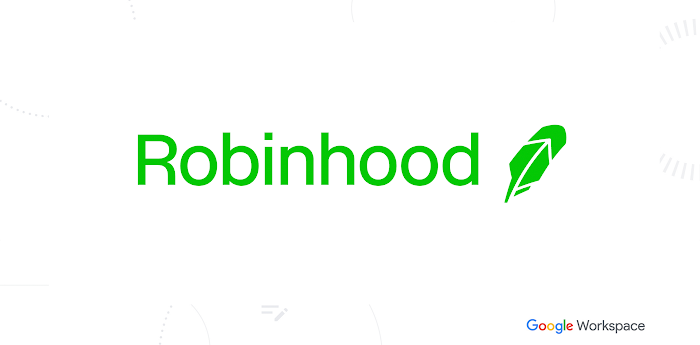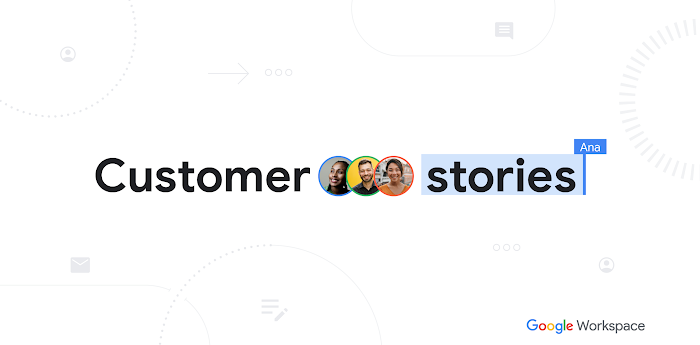How Hurley Medical Center is saving thousands in annual healthcare costs with the help of G Suite

The G Suite Team
Contact Google Workspace Sales Team
Learn more about how Google Workspace can give your teams a better way to connect, create, and collaborate.
CONTACT USEditor’s note: This week marks the annual HIMSS conference, a time when healthcare institutions take a closer look at IT technologies and strategies that can help them reimagine operations. Hurley Medical Center is no exception. Over the past two years, the company has adopted a cloud-first IT strategy and has earned the highest ranking for Electronic Medical Record (EMR) adoption according to HIMSS: EMRAM Level 7. With the help of G Suite, Hurley is transforming work and has already recorded $150,000 in annual software savings. Read on for more detail.
Healthcare companies are increasingly turning to paperless options to help optimize processes, strengthen data security, and, ultimately, improve patient care. To encourage businesses to go paper-free, the Healthcare Information and Management Systems Society, HIMSS for short, issues an annual report through its analytics arm that evaluates hospitals on their Electronic Medical Record (EMR) capabilities. This eight stage test ranks companies from zero to seven on how well they implement IT technologies including digital imaging, interoperability and more.
With the responsibility of managing a person’s most precious gift—their health—it’s vital that healthcare institutions have access to the security controls they need to keep their data safe. This is why many companies are turning to cloud-based technologies with simple-to-use tools, like G Suite and Chrome Enterprise, to not only secure patient data, but transform how they work.
Take Hurley Medical Center, for instance, a non-profit that serves the residents of Flint, Michigan. Until late last year, Hurley used on-premises productivity software applications and email servers provided from a vendor with involved licensing agreements. “It was expensive and overly complicated,” says Casey Bryson, CIO of Hurley Medical Center. “I didn’t want to spend my life understanding their licensing model. It’s wasted time that I could spend on our mission.”
I didn’t want to spend my life understanding their licensing model. It’s wasted time that I could spend on our mission.
Casey Bryson, Chief Information Officer, Hurley Medical Center
Held back by a lack of real-time collaboration in documents, and experiencing issues with accessing email in some countries, Hurley turned to Onix, a cloud solutions provider to compare their on-premises vendor’s solution to G Suite Enterprise.
To kick off the transformation, Onix organized and facilitated workshops to understand how Hurley employees use their email and productivity apps. Says Bryson, “They met with our teams in legal, nursing, human resources and other departments to truly understand their requirements and show them what their workflows might look like in the cloud.”
These workshops helped Bryson and his team move its 3,700 active users to G Suite in just four months. Taking it a step further, Hurley is one of only 6.4 percent of U.S. hospitals that has achieved HIMMS’ highest ranking for EMR adoption—a feat worth celebrating.
Breaking it down
With G Suite’s cloud-native apps like Gmail and Docs, Hurley employees are able to securely access email and documents from anywhere and any device, no more files saved on the physical desktop. Here’s a snapshot of how Hurley uses G Suite and Chrome Enterprise to transform work:
→ Hurley employees go paperless with real-time collaboration: Prior to G Suite, Hurley’s in-patient rehab team used to rely on an on-prem spreadsheet app and whiteboards to disseminate their team schedules—the supervisor spent upwards of 30 minutes each day coordinating scheduling. Now, the team uses Google Sheets and Calendar to bypass manual scheduling, sharing up-to-date schedules online that are HIPAA compliant. In addition, the team uses Chrome Sign Builder, a free extension for Chrome Browser that displays content on Chrome device screens using a linked URL, to display schedules on a 75-inch TV in the office. This makes it pretty tough to be tardy to a shift.
→ Hurley admins manage data security with insights: Just as employees have adopted G Suite tools because of their intuitiveness, Hurley’s IT teams have also benefited from the easy-to-use security tools in the Admin console. In the console, admins can stay in control of who sees company data by managing app access (including third-party apps) and devices, as well as prevent sensitive data from being shared externally using integrated data loss prevention (DLP). Because Hurley is an enterprise customer, it’s also able to take advantage of proactive security health recommendations that are distributed in the console, tailored advice and best practices to further protect its users.
→ Hurley has saved thousands of dollars through app consolidation: Because G Suite includes many different apps, including video conferencing through Hangouts Meet and file storage and syncing through Google Drive, Hurley is able to reduce the number of vendors they rely on for services. Says Casey, “G Suite consolidates so many applications in one place, which helps me dramatically reduce the time I spend budgeting, negotiating, or performing security reviews on multiple vendors. We’ve saved $150,000 in annual software costs because G Suite enabled us to eliminate duplicative services.”
These are just a few ways that Hurley is reimagining how its employees work together. You can read more about their story in this case study.
If you’re interested learning about other inspiring ways that customers and partners are using Google Cloud to transform healthcare, check out this blog post. Or visit us onsite at HIMSS this week. You can find us at booth #2221.



